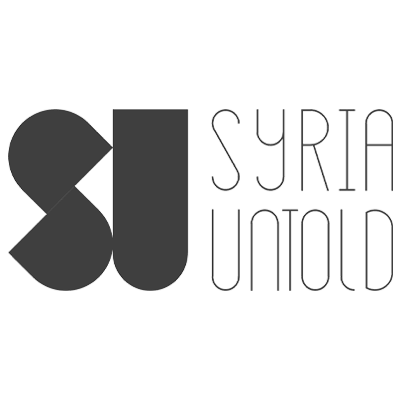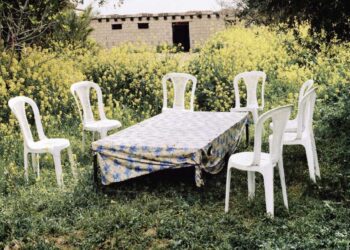In a world marred by conflict and displacement, the concept of ‘home’ takes on profound significance. Dr. Ammar Azzouz, a Syrian British architect, delves into the question, “What does it mean to lose home?” in his exceptional book, “Domicide: Architecture, War and the Destruction of Home in Syria.” Through this work, he provides a bold analysis of the ongoing crisis in Syria, focusing particularly on the city of Homs, a microcosm reflecting the challenges faced by a nation torn apart by war.
At the heart of Dr. Azzouz’s exploration lies the thought-provoking concept of ‘domicide’, encapsulating the deliberate destruction of homes during the conflict. ‘Domicide’ embodies the suffering of those whose homes have been decimated by the ravages of war. Azzouz takes readers through the pain and anguish experienced by those uprooted and whose dwellings have been ravaged, all within the context of Homs—a city they hold dear. Homs, being the third-largest city in Syria and referred to as ‘the capital of the revolution’ during the uprising, mirrors the broader struggles of a nation grappling with post-conflict challenges. It serves as a lens through which to examine the intricate process of reconstructing lives, homes, and communities.
What distinguishes ‘Domicide’ is Dr. Azzouz’s intimate connection to his subject. Hailing from Homs himself, he infuses his analysis not only with academic rigor but also with a deeply personal understanding of the emotional landscape. Homs transcends being just a case study; it becomes a part of the author’s identity, lending authenticity and resonance to his words that are both tangible and profound.
The book offers a comprehensive exploration of the Syrian crisis, focusing its lens on Homs. Core to the text is the notion of ‘domicide,’ resonating powerfully within Homs, a city affected by the complex interplay of wartime and peacetime dynamics. Azzouz effectively challenges conventional paradigms of displacement, destruction, and reconstruction analysis.
By entering the narrative on the concept of ‘home,’ the book investigates the profound ramifications of domicide on internally displaced residents and Syrians scattered across foreign lands. Through this lens, the author transcends surface-level assessments of monumental site destruction, considering the intricate realm of physical and sociocultural trauma—the visceral aftermath of being uprooted from cherished abodes.
This work examines not only the process of rebuilding lives, dwellings, and sanctuaries within and beyond Syria’s borders but also presents a holistic view of the ordeals faced by those forcibly torn from their homes by conflict. Furthermore, the book shines a light on overlooked aspects of everyday existence during the conflict, highlighting the resilience and everyday struggles that often fade into obscurity when viewed solely through the refugee-focused lens.
Azzouz’s meticulous exploration within the context of Homs poses a stark challenge to the dehumanizing impact of citywide destruction—a trauma experienced both in peacetime and conflict. Amidst the wreckage and the subsequent journey of reconstruction, the author underscores the need to prioritize communities within these efforts. The narrative advocates for a pivotal shift, one that encompasses the narratives of refugees and also those who tenaciously uphold their cities amidst the tumultuous backdrop of conflict and rebuilding.
Azzouz’s immersive narrative takes readers deep into Homs, capturing its essence both before and during the tumultuous events of 2011. Through his skilled storytelling, he introduces the concept of ‘domicide,’ illustrating its impact through the lens of ‘slow violence.’ This perspective adds a haunting layer to the narrative as it becomes evident that the destructiveness experienced by Homs transcends wartime, extending into times of ‘peace.’
Homs’ history of suffering extends beyond conflict. Azzouz traces the city’s evolution from subtle waves of slow violence to the intense, radical destruction defining the post-2011 era. This pattern of violence dates back decades, with the city’s traditional homes and cultural heritage systematically erased under the guise of modernization and development. The city’s architectural legacy and cultural identity eroded, replaced by towers, governmental buildings, and car parks. The removal of ancient trees exacerbates the loss of Homs’ historical memory.
In this evolution, the battle extended beyond physical structures. The city’s identity-shaping trees, like Acacia in Al-Ghouta Street and Palm in Hamra Street, fell victim to peacetime ‘domicide.’ Uprooted and replaced with foreign trees, this transformation occurred without the consent of the people, leading to what Suad Jarrous, a Syrian writer and journalist, termed the ‘assassination’ of Homs’ urban heritage in the name of modernization. The redesign seemed to prepare the city for war, “making these streets wide enough for tanks, and to clear the views from the trees for the snipers to kill.”
Significant changes in Homs began with proposed projects in 2007, part of the former governor Mohammed lyad Ghazal’s vision. However, these plans, known as ‘The Homs Dream,’ were controversial and led to social, cultural, and environmental upheaval. The project aimed to replace parts of the city with high-rise buildings, attracting Gulf investors and erasing the city’s fabric. Homsis called it the ‘Homs Nightmare.’ Grassroots groups and impacted communities opposed the transformation that would replace their lands with golf clubs and skyscrapers, leading to demonstrations and a rejection of the project.
The first sparks of the uprising ignited in Homs in March 2011. Protests organized by grassroots activists and dissenters echoed their yearning for ‘Freedom, Dignity, and Justice.’ However, it was the collective resistance that defined the revolution, with the ‘New Clock Square’ embodying the collective strength to reshape the city. On April 18, 2011, thousands gathered peacefully for a sit-in at the square, which turned into the ‘Clock Massacre,’ resulting in loss of life and disappearances.
Attempts to reclaim this symbolic space were violently suppressed, particularly after April 2011. The regime’s strategy shifted, gradually dividing the city into pieces by obstructing roads and limiting movement, “space was weaponized. As divisions restricted people’s movement, each neighborhood started to become like a city within the city.” Violence reshaped the city irreversibly, and divisions transformed into cement walls and checkpoints, segregating neighborhoods. The war zone expanded into a siege, denying access to aid and medicine. The obliteration of homes became a tool of forced displacement, erasing communities.
Years of siege followed by forced displacement shattered the city’s fabric, dislodging people from their homes and erasing identities. A once-familiar city became disorienting, inducing a sense of exile even among those who chose to remain. This feeling of estrangement isn’t confined to those forcibly displaced; even those who stayed in Homs share this sentiment.
The discourse on conflict-induced displacement in Homs overlooks critical perspectives. The international focus often fixates on historical sites, overshadowing the voices of those who lost their homes. Internally displaced people (IDPs) are similarly marginalized. Furthermore, there’s a tendency to perceive the destruction as an isolated incident, ignoring its orchestrated nature.
Forced displacement and losing ‘home’ have profound emotional implications. The interplay of community, neighborhood, and personal connections becomes disrupted. This intricacy is challenging to express, as ‘home’ encompasses our families, emotions, and fears. In the words of Zankawan, a forcibly displaced woman from the old city of Homs, every form of loss is a tragedy.
Amidst the journey of thousands migrating toward Old Homs, the desolation is palpable, leaving an indelible imprint on the psyche. Hanan, a pseudonym of an exiled Syrian Palestinian architect, provides an account that encapsulates the visceral experience of displacement, where the familiar fabric of a once-vibrant community morphs into a ghostly echo of what was. Amidst the ruins, memories remain unattainable artifacts, forever etched in the mind.
A central question surfaces: “How to resist forgetting?” Azzouz delves into the challenges faced by displaced Syrians as they strive to preserve memory and narratives. Memory projects emerge as a means of fighting to remember and not forget. The book raises questions about how memory can withstand time, conflict, and manipulation. The regime’s attempts to “erase the memory of the war and pretend that nothing has happened”, through narrative manipulation and memorials are scrutinized.
Preserving the memory of struggles should be woven into the urban fabric and cultural essence of Syria’s cities. Syrians in exile actively resist forgetting, safeguarding their history, and reconstructing their identities. Through various rituals, traditions, and artistic expressions, they uphold symbols of home, such as the New Clock Tower. These rituals and traditions include ceremonies to commemorate significant events in the city’s collective memory, like the sit-in in Homs’ New Clock Square. This sit-in not only holds immense historical significance but also gave the New Clock Tower a symbolic value as a representation of the sit-in in Homs’ New Clock Square and the collective peaceful struggle of Homsis to reclaim this symbolic space and their right to be heard. These gatherings serve as a powerful means of sharing stories and experiences, strengthening bonds within the community, and reaffirming their connection to their homeland. Some exiled Syrians also express their feelings through paintings or sculptures that feature the New Clock Tower, a prominent landmark in Syria, as a symbol of their longing for home. Initiatives dedicated to preserving memories play a pivotal role in supporting these efforts.
Azzouz examines construction projects unfolding in Syria even before the resolution of the war. He perceives an unbroken chain of domicide spanning periods of tranquility and conflict. The Syrian government introduced contentious legislation, Laws No 10 and No 42, threatening the property rights of those forcibly uprooted. A new phase of assault on inhabitants’ existence emerges through reconstruction, it is a “war of a different kind”. This new dimension compounds the affliction imposed on the populace.
Amid these circumstances, the ‘Homs Dream Project’ casts its shadow. Proposals driven by political and economic elites aim to reconfigure Homs’ urban layout, social fabric, and cultural identity. The justification often hinges on viewing the city as a “dead body”, warranting the construction of contemporary markets and hotels as replacements. This stance prolongs the pattern of domicide, both preceding and following the conflict. Throughout these deliberations, marginalized communities find their voices absent from the discourse.
‘Domicide’ is more than a book; it’s a call to action that beckons readers to engage with the narrative as participants in a movement. This movement seeks to reclaim home, rebuild lives, and rewrite the shattered story of a nation. Dr. Azzouz’s words transcend the pages, inspiring us to ask not just “What does it mean to lose home?” but also “What can we do to reclaim it?” Embarking on a reading journey through the pages of this remarkable work, readers will find themselves not only as a witness to a story but also as an agent of change. The book’s emotional depth is coupled with a compelling roadmap for the future, where small steps amass into transformation. This roadmap urges us to unite, bridging the divide between those who have fled and those who remain, architects and communities alike, in order to construct a Syria that belongs to all.
In the end, ‘Domicide’ is a symphony of emotion and intellect, a testament to the power of scholarship to ignite action, of words to guide us through darkness, and of memory to shape a brighter future. This book is a must-read for anyone who believes in the resilience of the human spirit and the potential for change. Dr. Azzouz’s work inspires readers to not only understand but also actively participate in the journey of reclaiming home.








